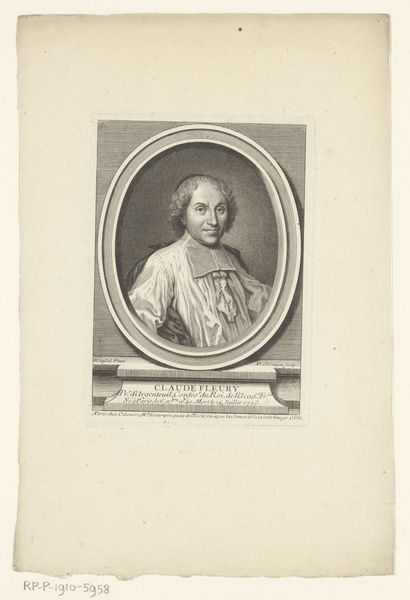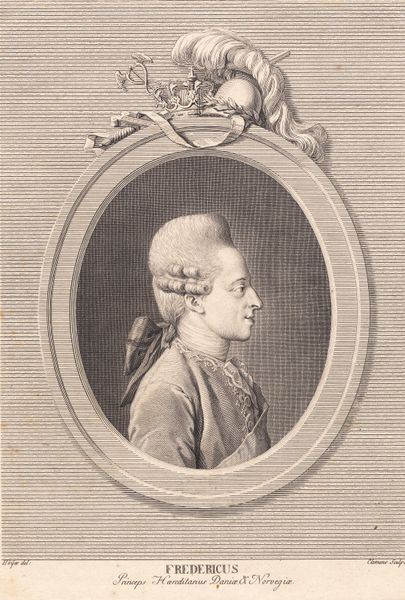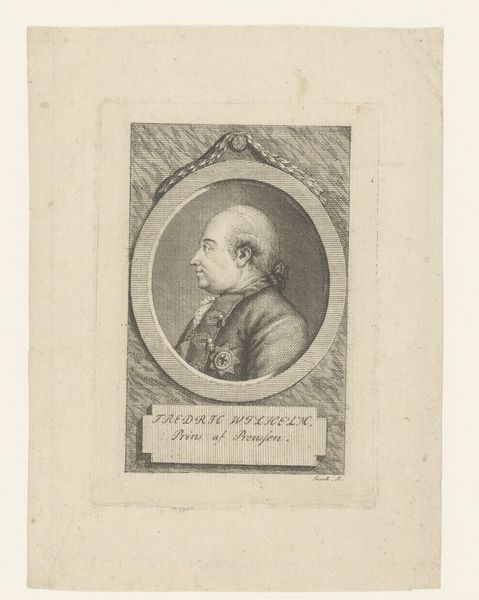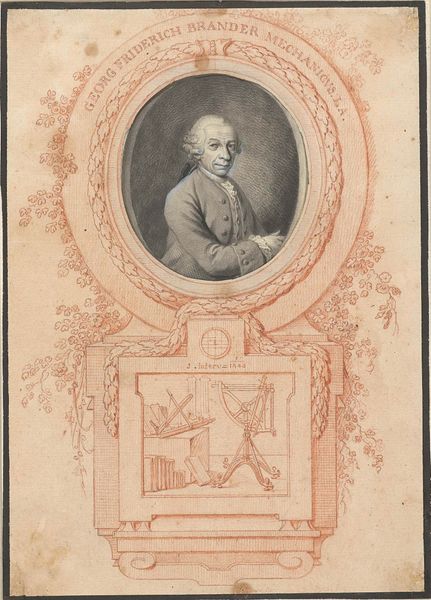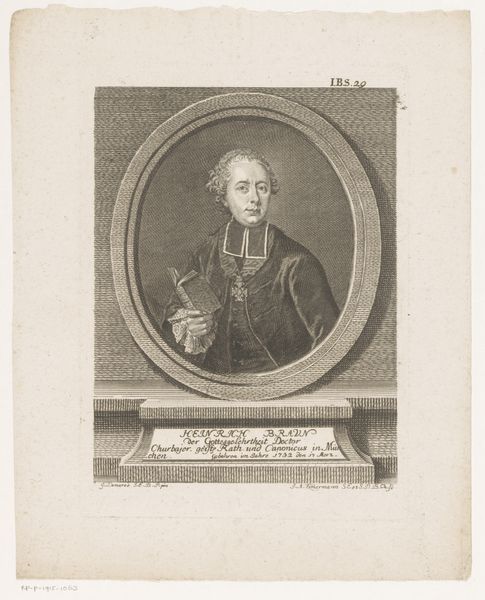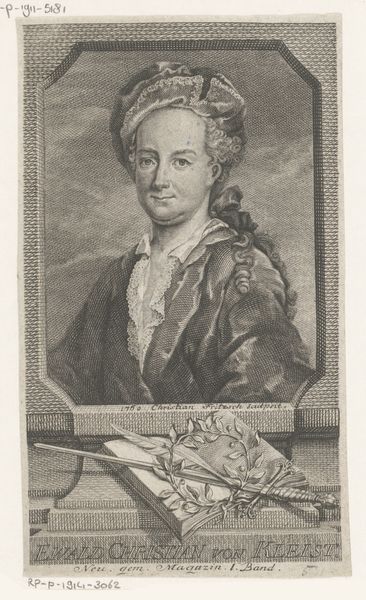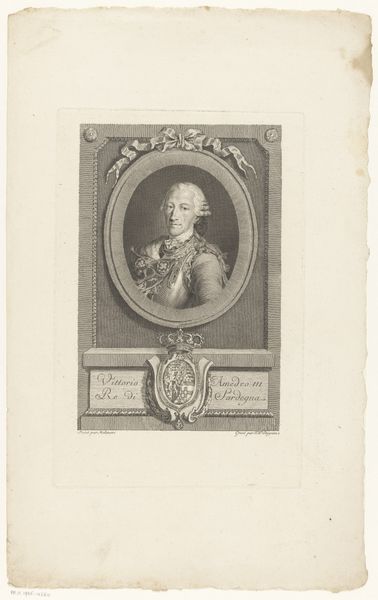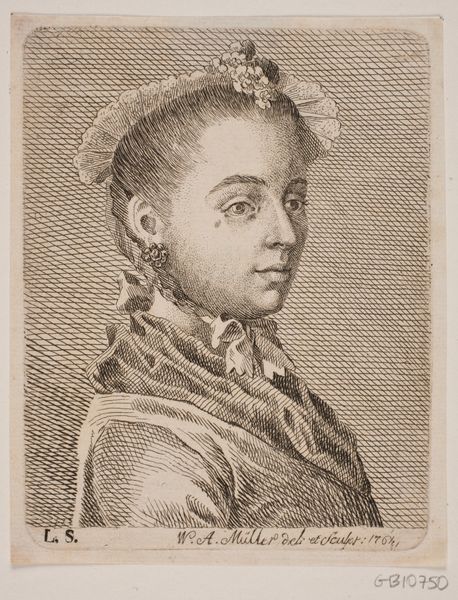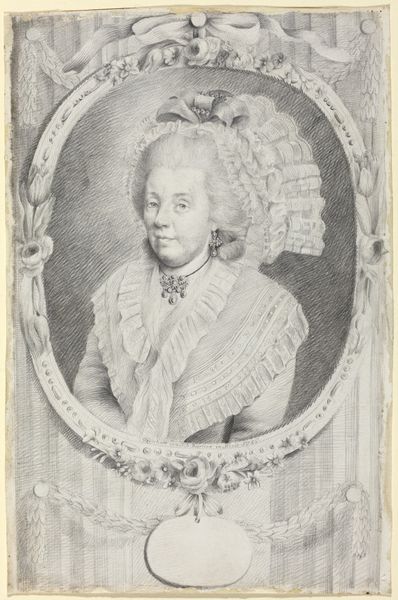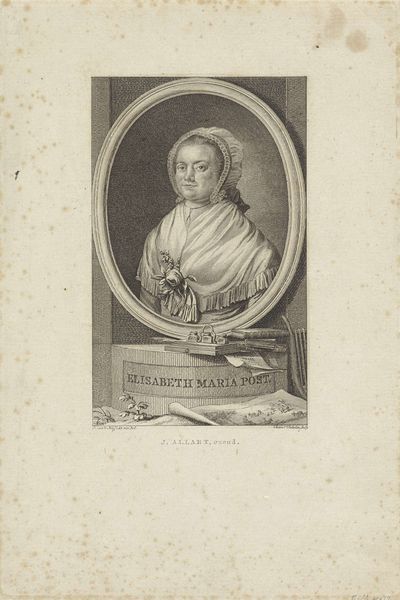
drawing, print, engraving
#
portrait
#
drawing
# print
#
figuration
#
line
#
engraving
Dimensions: overall: 13.9 x 10.4 cm (5 1/2 x 4 1/8 in.)
Copyright: National Gallery of Art: CC0 1.0
Adrian Zingg made this portrait of a girl using etching and engraving techniques, likely in Germany, during the late 18th or early 19th century. The image is framed within a decorative oval, topped with ribbons and flowers, suggesting a commemorative or sentimental function. The girl's simple attire contrasts with the ornate frame, hinting at the complex relationship between social status and representation in art. The fine lines and delicate shading, achieved through skilled engraving, were typical of the period, reflecting the aesthetic preferences of the time. During this era, portraiture served as a tool for asserting social identity. The rise of the middle class led to increased demand for portraits, reflecting changing social structures and the desire for self-representation. To understand this work fully, we can look to period documents and social histories, to consider the role of portraiture in shaping social norms.
Comments
No comments
Be the first to comment and join the conversation on the ultimate creative platform.
